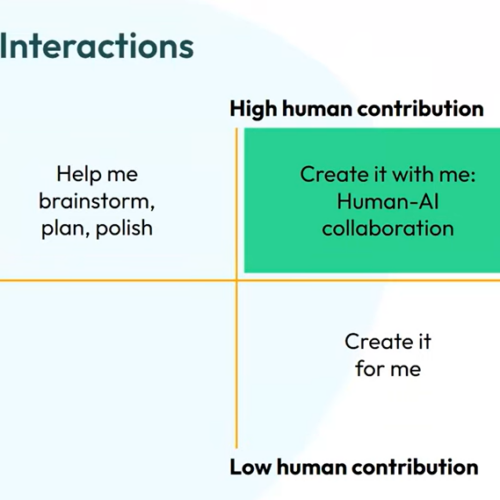Survey Says: Teaching Strategies That Worked for WashU Faculty

One question in the survey asked: What worked especially well in your teaching this past semester that you think other instructors should know?
In the responses, four themes emerged:
Interactive Teaching
Over half of instructors who answered the open-ended question about what worked well in their teaching talked about interactive teaching methods (“active learning”). The strategies listed were varied and included small group work, flipped classes, polling, synchronous discussions, discussion boards and many others. The common denominator among these responses was that students were required to actively engage course material through a variety of instructional modes. In synchronous classes, many instructors reported moving some or all of their pure content delivery (e.g. lecture) to outside of class, saving class time for questions, activities, peer engagement, and interactions with the instructor. As one respondent argued, “Zoom is not intended for lecturing, it’s best for active learning and collaboration…Flip your class and use Zoom for more dynamic discussion.”
The most popular method for generating interaction was small group work during class time. One instructor reported, “Well-planned breakout groups in synchronous sessions, with clear tasks and time limits, worked well to facilitate seminar energy and mutually beneficial learning.”
Clear and Frequent Communication
Instructors noted that frequent communication and setting clear expectations proved successful. For example, one person wrote that what worked best was having “clearly defined expectations, plenty of communication, and rapid responses from instructors to questions and concerns, [as well as] flexibility and compassion about deadlines.” Another person emphasized making the course plan clear and keeping students informed. “Having a detailed week-to-week schedule in Canvas really worked well for me…I also reinforced that schedule and content with weekly announcement after each class to help remind students.” The experiences of these instructors, as well as many others, resonates with advice given by online teaching experts who stress that online learning requires more deliberate communication to make up for the loss of in-person interaction (Darby and Lang 2019).
Communication, however, is not a one-way street and some survey respondents talked about ways they solicited student feedback. For example, one person wrote, “I included components by which students provided more regular feedback to me about their ongoing experience in the course. This was helpful.”
Breaking Things into Smaller Chunks
A number of respondents to the survey explained that it worked well to break up items into smaller segments than they might done in their past teaching. This applied to a wide range of course components, including live lectures, recorded lectures, assignments, exams, etc. For example, instructors reported that adding pauses for activities in synchronous lectures worked well to promote student engagement, and that recorded lectures were more successful when broken up into smaller pieces. Some instructors replaced large high-stakes exams with a larger number lower-stakes quizzes.
As one person shared, “It also worked well for me to pre-record lectures and post small quizzes covering their content, rather than lecturing live. I made sure to break these lectures into short segments so that they were easier to navigate and return to for review purposes. Based on feedback from students, I’d highly recommend doing this to others who do any lecturing.”
Structuring the Course for Success
Many instructors talked about the importance of having a strong course structure, but also keeping things simple and flexible, as well. Some stressed the useful role that Canvas can play in organizing a course. One person wrote that “Building out a robust Canvas presence is ESSENTIAL, regardless of modality. This came in handy many times for students who were unable to attend synchronous sessions.” Another respondent described building their course in such a way that students had multiple avenues for participation, “I found flexibility to be a key attribute – e.g., allowing students to earn participation via in-class discussion, discussion via zoom, or asynchronously via Canvas discussion boards.” Others talked about simpler approaches working best for them. “I learned from the spring that in online teaching, less is more….[Now] students read a book, write a long post about it, everybody reads everyone’s posts, then we meet in Zoom to talk. That’s all. It’s simple, and it’s not overwhelming. I’m convinced that students have learned more after I cut back to this.” The common thread throughout these comments was that advance planning, geared toward adapting one’s course to the current teaching environment, paid off in the end.
Works cited
Darby, Flower, and James M. Lang. 2019. Small Teaching Online: Applying Learning Science in Online Classes. San Francisco, CA: Jossey-Bass. [Available as an e-book to WashU affiliates]




